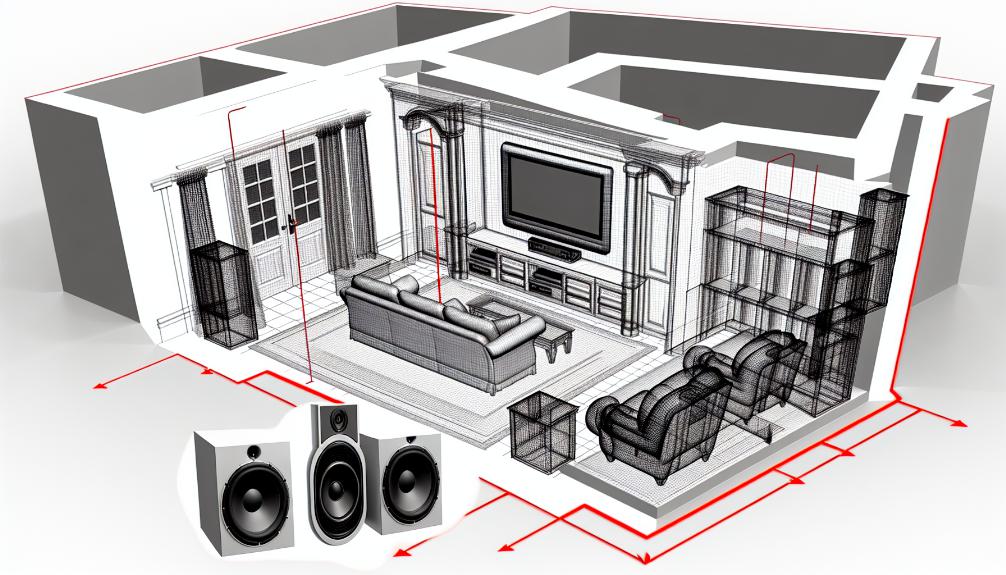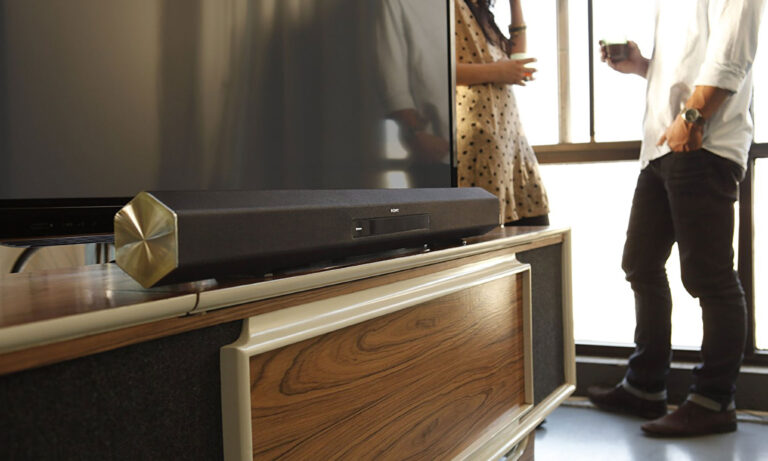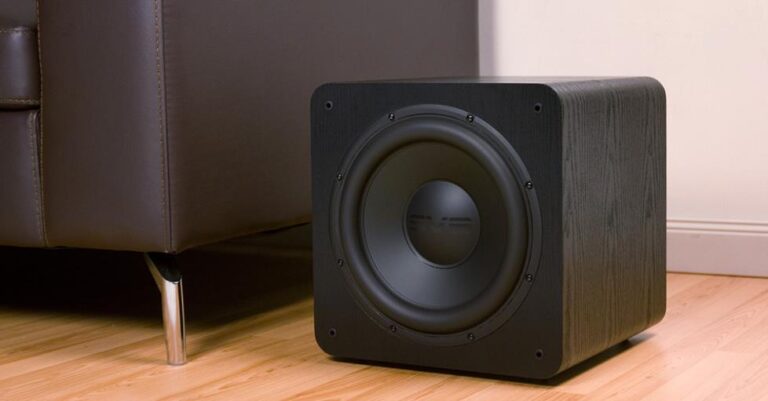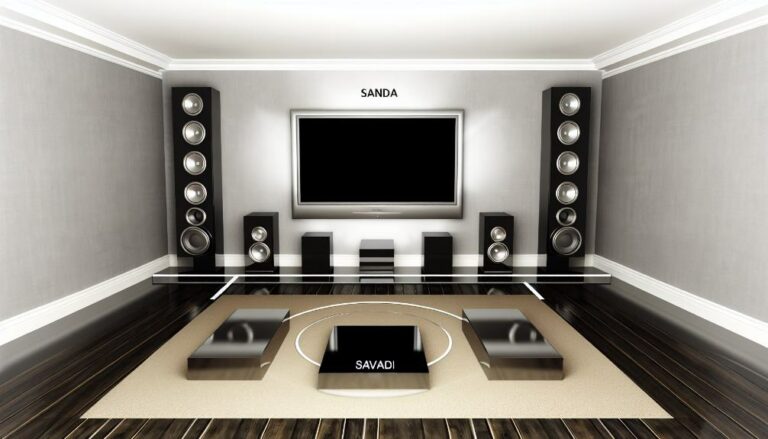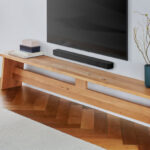The placement of a subwoofer within a home theater setup can significantly influence the overall acoustic experience. It demands an intricate balance between room acoustics, layout, and furniture positioning.
Subwoofer placement is often underestimated, but it is a critical component of creating an immersive home theater environment. It has the power to enhance or detract from the overall sound quality.
This blog article will explore the various factors influencing optimal subwoofer placement. It will also highlight why a seemingly simple decision can have profound implications for your home theater experience.
Key Takeaways
- Subwoofers should be placed near the center speaker for stereo or 5.1 surround sound systems, and one in the front and one in the rear for a 7.1 system.
- Corner positioning of the subwoofer can increase perceived bass volume but may result in overemphasis on certain frequencies.
- Subwoofer isolation, using isolation pads or stands, can minimize sound reflections and vibrations.
- Furniture materials and arrangement can significantly impact room acoustics, so consider the type and placement of furniture for optimal subwoofer performance.
Understanding Home Theater Acoustics
Delving into the realm of home theater acoustics, it becomes imperative to comprehend the complex interplay of sound waves within your designated space. Acoustic materials and soundproofing techniques are key components that significantly influence the audio experience.
Acoustic materials can be categorized into three groups: absorbers, diffusers, and barriers.
- Absorbers soak up sound waves and prevent them from bouncing back into the room, reducing echo and background noise. Common absorbent materials include foam and fabric.
- Diffusers scatter sound waves, creating a more balanced sound field by preventing the formation of hot spots where sound waves concentrate.
- Barriers, such as mass-loaded vinyl, block sound transmission between rooms, thus aiding in soundproofing.
Soundproofing techniques, on the other hand, entail creating a barrier that prevents sound from escaping the room or from external noise infiltrating the home theater. These techniques include adding extra layers of drywall, using resilient channels, and installing soundproofing curtains or window inserts.
Understanding how these materials and techniques affect sound propagation is pivotal in creating an optimal home theater experience. After all, the goal is to reproduce cinematic sound experiences in a controlled environment.
Evaluating Your Room Layout
Assessing the layout of your room is a critical step in optimizing the placement of your home theater subwoofer, as it heavily influences sound distribution and overall acoustic performance.
Room dimensions, including the length, width, and height, play a significant role in determining the ideal location for your subwoofer. The larger the space, the more power you’ll need from your subwoofer to fill it with sound.
The speaker setup is another crucial aspect to consider. If you have a stereo or 5.1 surround sound system, your subwoofer should ideally be placed in the front of the room, near the center speaker. For a 7.1 system, you might consider placing one subwoofer in the front and one in the rear for balanced sound.
Additionally, room features such as windows, doors, and furniture arrangement can affect the sound waves and should be considered when evaluating the room layout. For instance, placing a subwoofer near a window or on a hard floor can create unwanted resonance.
Subwoofer Placement Options
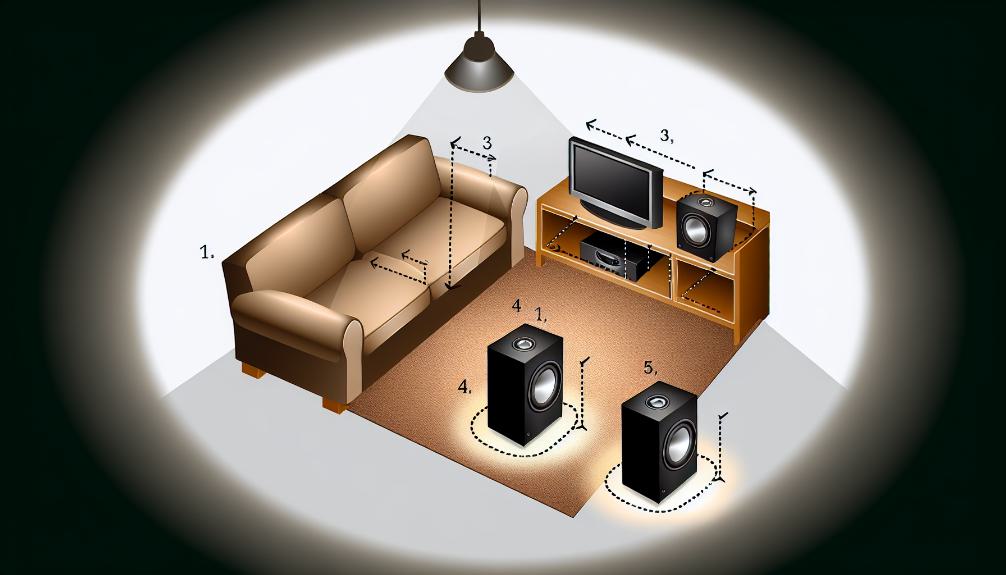
When considering subwoofer placement options, several key factors can influence the quality and directionality of the sound, such as the subwoofer’s proximity to walls, corners, and furniture. This is where corner positioning and subwoofer isolation come into play.
Corner positioning is often recommended for subwoofers because it can increase the perceived volume of bass frequencies. This phenomenon, known as room gain, results from the coupling effect of multiple reflective surfaces converging in a corner. However, this can also lead to overemphasizing certain frequency bands, resulting in a boomy or muddy sound.
If corner positioning is not an option or results in undesirable acoustic characteristics, subwoofer isolation becomes crucial. This involves placing the subwoofer away from walls and other large objects to minimize sound reflections. The objective is to prevent unwanted resonances and phase cancellations that can negatively impact sound clarity.
Furthermore, subwoofer isolation can also help to reduce the transmission of mechanical vibrations from the subwoofer to the building structure, which can cause rattle and other noises. Isolation can be achieved using specially designed isolation pads or stands, which decouple the subwoofer from the floor.
The Impact of Furniture Positioning
Beyond the influence of walls and corners, the strategic placement of furniture within the room can significantly affect the performance and sound quality of a home theater subwoofer. This is due to a phenomenon known as Furniture Acoustic Effects, which refers to how sound interacts with the materials and surfaces of your furnishings.
Furniture can either absorb, reflect, or diffract sound waves, thereby altering the acoustics of the room. Soft, porous materials such as upholstery and carpets typically absorb sound, reducing echoes and reverberation. In contrast, hard, flat surfaces like wooden tables or glass shelves tend to reflect sound, potentially causing distortion or unwanted resonance.
Room Resonance Factors also play a crucial role in subwoofer performance. These factors pertain to how the dimensions and layout of the room interact with the sound waves, causing certain frequencies to be amplified or diminished. Large, heavily furnished rooms can often suppress low-frequency sounds, making the subwoofer seem less potent. Conversely, a sparse room may over-emphasize these frequencies, resulting in a boomy or muddy sound.
Therefore, achieving the optimal subwoofer placement involves not only positioning it in relation to the room’s walls and corners but also considering the arrangement and type of furniture within the space.
Fine-tuning for Optimal Sound
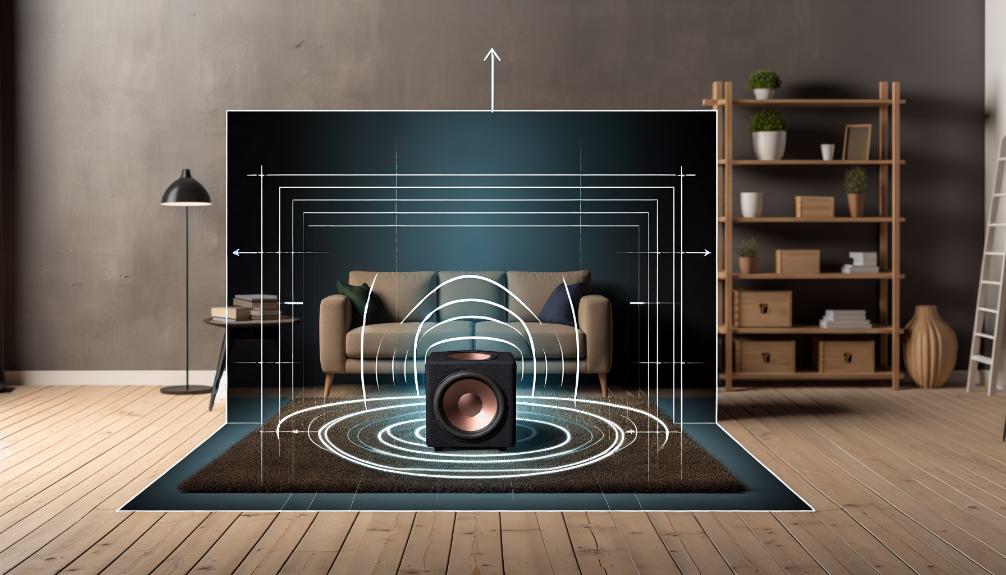
A considerable part of achieving optimal sound from your home theater subwoofer involves fine-tuning, a process that necessitates meticulous adjustments and keen attention to acoustical details.
To begin fine-tuning, your first task is sound calibration. This involves adjusting the subwoofer’s volume, crossover frequency, and phase control settings to balance with your room’s acoustics and other speakers.
Start by setting the volume level to match your main speakers. Next, adjust the crossover frequency, typically set between 80-120 Hz, to ensure a seamless transition of bass frequencies between your subwoofer and main speakers.
Lastly, adjust the phase control settings to synchronize the subwoofer’s output with the other speakers.
Bass management is another critical aspect of fine-tuning. This process involves configuring your AV receiver or preamp to correctly direct low-frequency effects (LFE) and bass frequencies to your subwoofer.
Check that all speakers are set to “small” in your receiver’s settings, which routes bass frequencies to the subwoofer. Also, set the LFE crossover frequency to the THX standard of 80 Hz to ensure your subwoofer effectively handles all the bass frequencies.
Frequently Asked Questions
What Are the Best Brands of Home Theater Subwoofers in the Market?
Popular brands for home theater subwoofers include Klipsch, Bose, Sonos, and Sumsung. These brands consistently deliver superior sound quality, power efficiency, and durability, making them market leaders.
Can I Use a Home Theater Subwoofer for My Outdoor Sound System?
Yes, a home theater subwoofer can be used for an outdoor sound system, but consider outdoor acoustics and whether the subwoofer is weatherproof to ensure optimal sound quality and longevity of the equipment.
How Often Does a Home Theater Subwoofer Need to Be Replaced or Serviced?
The lifespan of a home theater subwoofer varies based on usage and maintenance. Regular dusting and appropriate volume levels prolong its life. However, professional servicing or potential replacement is typically required every 5-10 years.
What Is the Price Range for Quality Home Theater Subwoofers?
The price range for quality home theater subwoofers varies significantly, influenced by factors such as subwoofer size consideration and the degree to which subwoofer placement impacts sound quality, typically ranging from $100 to over $1000.

